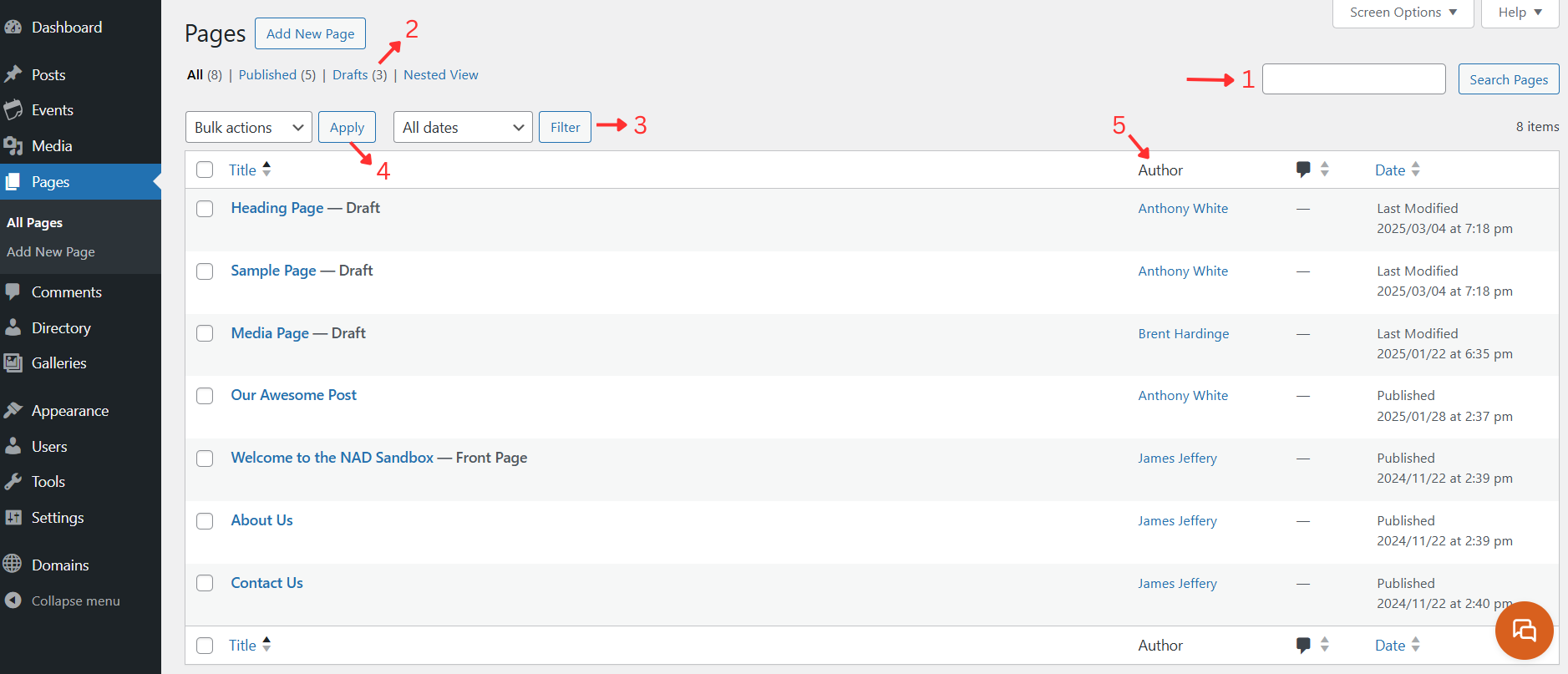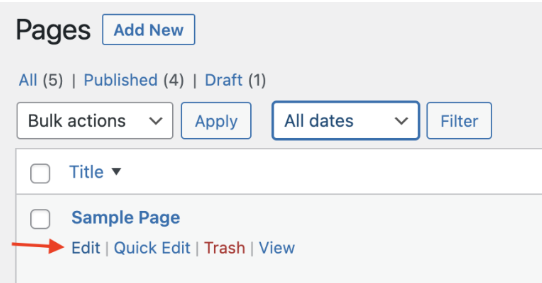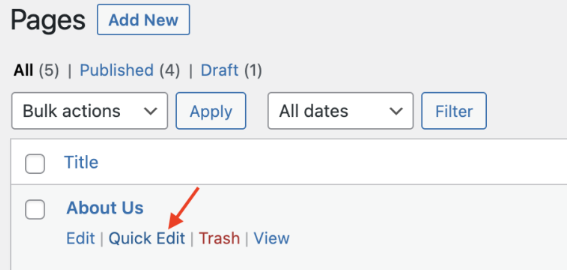Content Management
Creating Pages
Learn how to craft engaging articles for your WordPress site. This guide walks you through the process of creating, formatting, and publishing articles that effectively communicate your message to your audience. Discover how to use the block editor to add text, images, and other media elements to create compelling and professional-looking content.
Last updated on 14 Sept, 2025
Understanding Posts vs. Pages
In WordPress, you can add content to your site as either Posts or Pages, each serving different purposes:
Posts
Posts are time-based content entries that appear in reverse chronological order on your blog. They're ideal for:
Regular blog updates
News announcements
Sermons or devotionals
Event recaps
Pages
Pages are for timeless, non-chronological content that remains relevant regardless of when it was published. They help organize your site structure and typically include information like:
About
Contact
Privacy Policy
Ministry Information
Location & Service Times
Key Differences
Pages are excluded from your blog’s chronological post list.
They support parent-child hierarchies, allowing main pages with subpages.
Unlike posts, pages do not use categories or tags by default.
Pages are not included in RSS feeds.
You can assign different templates to pages for unique layouts.
You can set either a Page or your latest Posts as your site's homepage, depending on whether you want a static welcome page or a dynamic blog as your main entry point.
Pages Screen
To see all pages on your WordPress site:
Log in to your WordPress dashboard
Click Pages in the left navigation menu
The Pages screen will display a complete list of all pages on your site

Your Pages screen offers several helpful tools:
Use the search box to quickly find pages by title
Filter pages by status (Published, Draft) using the tabs above the list
Narrow results by date using the date filters
Select multiple pages to perform bulk actions like Edit or Move to Trash
Sort your page list by clicking any column header (Title, Date, Author)
Organizing Pages
You can create a structured page hierarchy by establishing parent-child relationships between your pages. This organization helps visitors navigate your site more easily.
For example, you could create:
About Us (parent page)
Our Mission
Leadership Team
History
Beliefs
Location
Ministries (parent page)
Youth Group
Women's Ministry
Men's Fellowship
Community Outreach
Bible Study
This hierarchical structure creates a logical organization that helps visitors find information while reflecting your ministry's structure.
Creating a New Page
To add a new page to your WordPress site:
Log in to your WordPress dashboard
Click Pages in the left navigation menu
Select Add New from the dropdown menu, or
Click the Add New button at the top of the Pages screen
Enter a descriptive title for your page
Create your content using the WordPress block editor, adding text, images, and other elements as needed
Adjust the page settings in the sidebar to customize appearance and behavior
When your page is ready, click the Publish button to make it live on your site

Changing the URL of a page
To modify a page's URL (also known as its "slug"):
Go to the Pages screen in your WordPress dashboard
Find the page you want to modify
Hover your mouse over the page title
Click the Edit link that appears

Using the Quick Edit Option
To modify a page's URL (also known as its "slug"), go to the Pages screen in your WordPress dashboard, find the page you want to modify, and hover your mouse over its title. When the action links appear, click the Quick Edit link to access the slug field directly.

The Quick Edit panel allows you to modify essential page details without leaving the Pages screen. You can update the page title, slug (URL), publication date, and author. Additionally, you can password-protect the page, mark it as private, change its parent page, adjust page ordering, select a different template, or switch its status between Published, Pending Review, and Draft.

Click the Update button to save your changes.
Page Templates
A template controls the layout of your pages. Unlike themes, which set the design of your entire site, templates affect the appearance and organization of individual pages or groups of pages.
You can set specific pages to use a particular Page Template that comes with your theme. Additionally, you can create custom Page Templates for specialized layouts that will override the default Page Template included with your theme.
The dynamic nature of Pages
WordPress pages are technically "pseudo-static" - they contain relatively permanent information but are generated dynamically when viewed. Unlike true static HTML pages, WordPress pages are stored in your database and generated using PHP code each time someone visits them.
This dynamic generation provides a major advantage: when you update your theme or site design, all your pages automatically reflect these changes without requiring individual edits. The template system ensures consistent styling across your entire site while allowing the content to remain stable.
While many refer to WordPress Pages as "static" (especially compared to chronological Posts), they actually combine the best aspects of both static and dynamic content - permanent information that updates automatically with your site's design.
